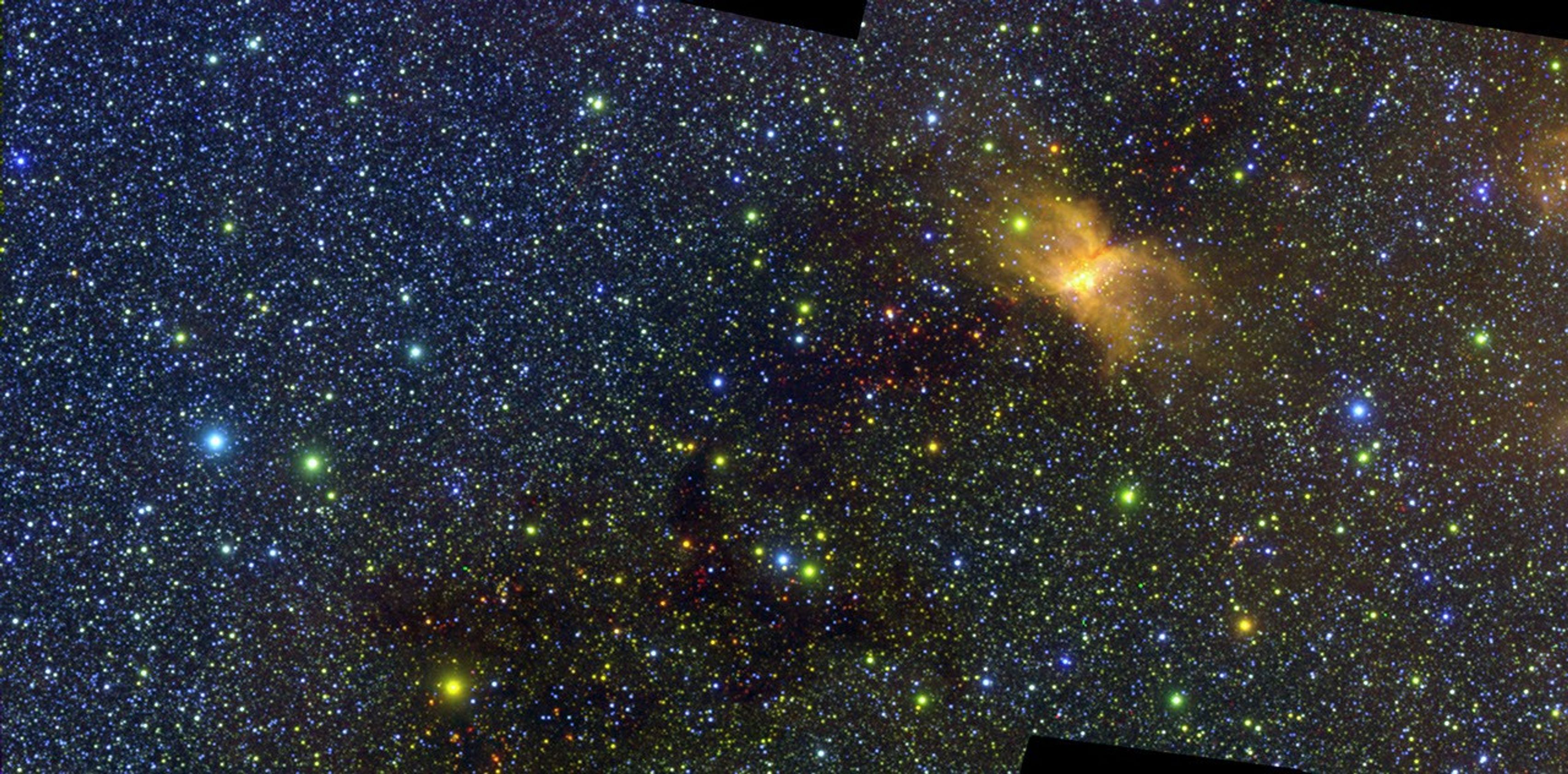Description
This image of the Vela Molecular Ridge was captured by NASA's SPHEREx (Spectro-Photometer for the History of the Universe, Epoch of Reionization and Ices Explorer) and was part of the mission's first public data release on July 2, 2025. The yellow patch at right is RCW 36, an emission nebula – a cloud of interstellar gas and dust that glows in some infrared colors due to radiation from nearby stars.
SPHEREx detects 102 infrared wavelengths, or colors, that aren't visible to the human eye. This image represents some of those wavelengths in three visible light colors – red, green, and blue.
Figure A (red) is the visible light image representing infrared wavelengths from 4.54 to 4.65 microns.

Figure A
Click on image for larger version
Figure B (green) is the visible light image representing infrared wavelengths from 2.83 to 3.20 microns.

Figure B
Click on image for larger version
Figure C (blue) is the visible light image representing infrared wavelengths from 0.74 to 0.88 microns. The emission nebula RCW 36 is largely invisible in this image because its gas and dust do not radiate light in this infrared range.

Figure C
Click on image for larger version
Figure D illustrates how these three visible light images represent some of the 102 unique infrared wavelength images taken of this area by SPHEREx and how they are combined into the image at bottom.

Figure D
Click on image for larger version
The SPHEREx mission is managed by NASA's Jet Propulsion Laboratory for the agency's Astrophysics Division within the Science Mission Directorate at NASA Headquarters. BAE Systems in Boulder, Colorado, built the telescope and the spacecraft bus. The science analysis of the SPHEREx data will be conducted by a team of scientists located at 10 institutions in the U.S., two in South Korea, and one in Taiwan. Caltech in Pasadena managed and integrated the instrument. The mission's principal investigator is based at Caltech with a joint JPL appointment. Data will be processed and archived at IPAC at Caltech. The SPHEREx dataset will be publicly available at the NASA-IPAC Infrared Science Archive. Caltech manages JPL for NASA.
For more about SPHEREx, visit:
































